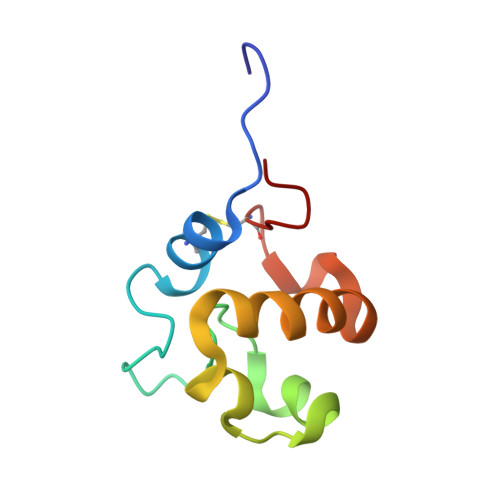NMR Structure and Dynamics of the Resuscitation Promoting Factor RpfC Catalytic Domain.
Maione, V., Ruggiero, A., Russo, L., De Simone, A., Pedone, P.V., Malgieri, G., Berisio, R., Isernia, C.(2015) PLoS One 10: e0142807-e0142807
- PubMed: 26576056
- DOI: https://doi.org/10.1371/journal.pone.0142807
- Primary Citation of Related Structures:
2N5Z - PubMed Abstract:
Mycobacterium tuberculosis latent infection is maintained for years with no clinical symptoms and no adverse effects for the host. The mechanism through which dormant M. tuberculosis resuscitates and enters the cell cycle leading to tuberculosis is attracting much interest. The RPF family of proteins has been found to be responsible for bacteria resuscitation and normal proliferation. This family of proteins in M. tuberculosis is composed by five homologues (named RpfA-E) and understanding their conformational, structural and functional peculiarities is crucial to the design of therapeutic strategies.Therefore, we report the structural and dynamics characterization of the catalytic domain of RpfC from M. tubercolosis by combining Nuclear Magnetic Resonance, Circular Dichroism and Molecular Dynamics data. We also show how the formation of a disulfide bridge, highly conserved among the homologues, is likely to modulate the shape of the RpfC hydrophobic catalytic cleft. This might result in a protein function regulation via a "conformational editing" through a disulfide bond formation.
Organizational Affiliation:
Dipartimento di Scienze e Tecnologie Ambientali Biologiche e Farmaceutiche, Second University of Naples, via Vivaldi 43, 81100, Caserta, Italy.














